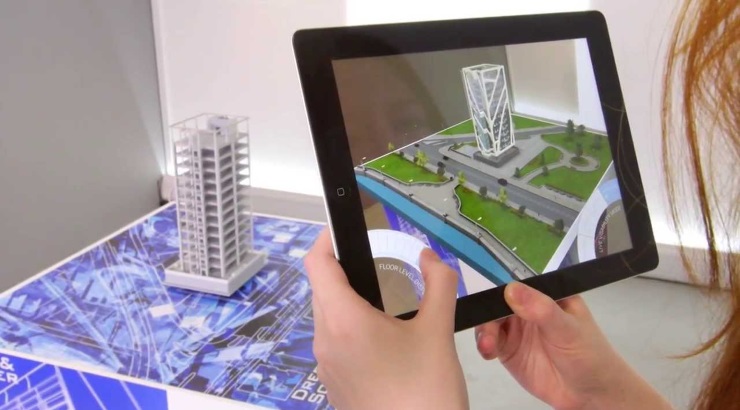Innovation
10 Real Estate Technology Trends for 2025
Overview of disruptive technology trends in real estate.

The real estate market has witnessed some momentous advances in recent times as more builders turn to technology to improve the quality of buildings while cutting time and costs.
One of the most disruptive trends in real estate today is the use of computer-based artificial intelligence to completely revolutionise the modern construction site.
Other trends include self-healing materials, 3D concrete printing, modular construction, virtual reality, augmented reality, etc.
From self-healing concrete to 3D printing of buildings, here are the most disruptive real estate technology trends shaping the future of the global real estate market.
1.) Self-healing concrete
For more than 2,000 years, concrete has been one of the most popular building materials due to its simplicity of production, durability, and ease of maintenance. However, the material is prone to developing cracks that can easily compromise a whole building.
To counter this setback, Henk Jonkers, a professor at Delft University of Technology in the Netherlands has invented self-healing concrete that biologically produces limestone to fill up cracks that appear on the surface of concrete structures.
Also known as bacterial concrete, self-healing is achieved by embedding limestone-generating microbes in concrete during construction. Once cracks appear, microbes are auto-activated to fill the fissure.
2.) 3D concrete printing
Concrete 3D printing is one of the upcoming real estate technology trends – promising a swift and cheaper way of building houses or even entire gated communities.
Although the technology is still in its infancy, technology startups are increasingly using giant printers to lay concrete walls from the base of houses to the top of buildings.
The entire process takes about 24 hours to complete.

3.) Smart buildings
Smart buildings are structures that use informational technology to automatically trigger operations such as lighting, air conditioning, heating, or security alarms when the need arises.
Shaping the future of real estate technology, smart buildings use smart sensors, actuators, and microchips to gather and manage data according to a building’s operations, thus helping homeowners to minimise the environmental impact of houses.
This is achieved by linking core systems such as fire alarms, lighting, heaters, and pumps, as well as power and water metres with sensors and control systems. At advanced stages, elevators and access systems can be integrated into the ‘smart’ system.
4.) Artificial intelligence (AI)
Artificial intelligence, which is the simulation of human intelligence in machines that are encoded to think like humans and mimic their actions, is the mother of disruptive trends in real estate.
Besides, AI tools can be deployed on sites to track the real-time interaction of workers and machines – warning project supervisors of productivity challenges, potential safety issues, and construction errors.
AI tools can also be used to enhance efficiency across the entire real estate industry from property investors to asset managers, and sellers.
5.) Machine learning
Machine learning uses algorithms to make predictions based on available data and to deliver outcomes based on identified classifications.
Intricate machine learning algorithms analyse inputs in real-time and provide relevant outputs complementing the elementary theme of the interaction.
Machine learning is quickly taking centre stage in modern-day real estate technology trends and can turn impassive site visitors into customers.
6.) Virtual reality (VR)
Virtual reality is a wearable technology that gives users a complete immersion experience that shuts out the physical world. This technology is quickly becoming one of the top digital trends in real estate as developers turn to VR to take potential buyers on virtual walks in and around the homes they wish to purchase.
Through the use of visors that completely isolate the users from their surroundings, a prospect can visualise a home from various angles in a visually-appealing setting.
VR can also enhance the atmospheric effects such as the sound of a water fountain to entice the prospects. Such effects are not possible in a real site visit.
7.) Augmented reality (AR)
Augmented reality is also a wearable technology that complements virtual reality. The technology adds digital elements to your physical world – often using the camera on a smartphone.
AR combines real and virtual worlds, real-time interaction, and accurate 3D registration of virtual and real objects to provide an interactive experience of a real-world with digital information overlay.
Through AR, prospects can enhance their virtual tour by digitally placing furniture in perspective with the living room to see how the home would look when occupied.
8.) Modular construction
Modular construction is the most popular trend in the real estate market today. It involves manufacturing parts of a building at a factory before moving the materials to the construction site for installation.
Modular construction allows construction to progress even in bad weather, thereby cutting project timelines while reducing site disruptions and the overall cost of construction.
9.) Use of construction drones
The usage of drones, also known as unmanned aerial vehicles, is becoming very common in large-scale construction sites, with most site surveys being conducted using UAVs.
Drones are nowadays fitted with advanced cameras that can capture better images and details that improve communication between them and software on the receiving end.
RELATED: How Drones are Changing the Construction Industry
This enables construction managers to monitor the progress of projects from the comfort of their offices through aerial pictures, maps, and 3D photos transmitted by drones.
10) Graphene-reinforced concrete
Researchers have found a way to incorporate graphene into concrete to increase its strength and water resistance.
Graphene, one of the strongest materials known to science, can be described (in layman’s terms) as a single, thin layer of graphite — the material used in pencil lead.
RELATED: OpenSpace: The ‘Google Street View’ of Construction
Using nano-engineering technology to suspend atomically thin shards of graphene in the water that is used when mixing concrete, scientists have been able to deliver a product that is 200 times stronger than steel.
Although research is still in progress, graphene is seen as the future of real estate technology – with a lot of potential to replace TMT bars in concrete reinforcement.














